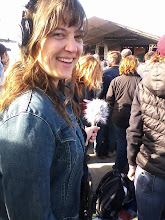Aired on The California Report November 8, 2014.
http://ww2.kqed.org/news/2014/11/08/california-foodways-growing-coffee-in-california/
And posted on NPR's The Salt November 12th.
http://www.npr.org/blogs/thesalt/2014/11/12/363516334/golden-state-joe-california-makes-a-play-for-coffee-s-future
The most commonly traded commodity in the world is oil. What comes in second? Coffee. It’s been grown and loved since at least the 13th century in places such as Indonesia, Ethiopia and Central and South America. As a serious fungus threatens the crop worldwide, scientists are mapping the coffee genome to learn more about this plant. Though it’s not coffee’s natural growing environment, California is actually playing a role in the future of this most beloved and lucrative crop.
http://ww2.kqed.org/news/2014/11/08/california-foodways-growing-coffee-in-california/
And posted on NPR's The Salt November 12th.
http://www.npr.org/blogs/thesalt/2014/11/12/363516334/golden-state-joe-california-makes-a-play-for-coffee-s-future
The most commonly traded commodity in the world is oil. What comes in second? Coffee. It’s been grown and loved since at least the 13th century in places such as Indonesia, Ethiopia and Central and South America. As a serious fungus threatens the crop worldwide, scientists are mapping the coffee genome to learn more about this plant. Though it’s not coffee’s natural growing environment, California is actually playing a role in the future of this most beloved and lucrative crop.

